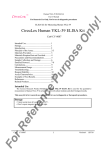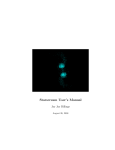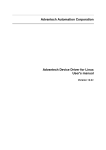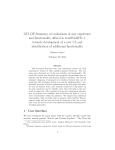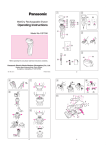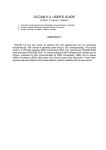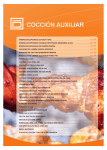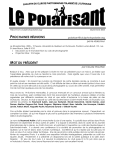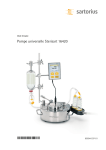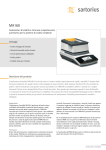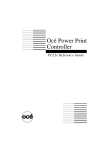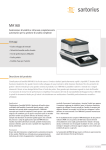Download Issue 7 - IVS Home Page
Transcript
IVS Newsletter Issue 7, December 2003 Preparations Underway for IVS General Meeting −Anthony Searle, Geodetic Survey Division, Natural Resources, Canada Since its inception, the IVS has gathered every two years to strengthen the organization through discussion of all aspects of international geodetic VLBI. On February 9–11, 2004, Natural Resources Canada in Ottawa, Canada is proud to host the Third General Meeting of the IVS, following successful meetings in Kötzting, Germany and Tsukuba, Japan. This venue will give visitors an opportunity to experience the capital of Canada during North America’s greatest winter festival. The Third General Meeting will focus on “Today’s Results and Tomorrow’s Vision”. Participants are asked to consider in their presentations the future operations and contributions of the IVS as it builds on VLBI’s long history as a fundamental geodetic technique. The formal portion of the meeting will consist of three parts: an IVS Directing Board meeting on Sunday, February 8; the General Meeting Monday through Wednesday, February 9–11; followed by an Directing Board Holds 10th Meeting −Nancy Vandenberg, NVI, Inc./GSFC The IVS Directing Board held its 10th meeting at Haystack Observatory on September 29. All 14 board members were in attendance. Harald Schuh was attending as the new IAG representative to the IVS board, having replaced James Campbell in that position. The board then voted to have Zinovy Malkin fill the remaining term of the Analysis and Data Centers representative. Franco Mantovani (CNR, Italy) was elected (via e-mail after the meeting) to fill the At Large position vacated by Zinovy Malkin. Nancy Vandenberg, Coordinating Center Director, has formed a discussion team for the redesign of the IVS web site. Progress has been made on the structure of the site, and work on the graphics will begin later this year. December 2003 Page 1 Seven Analysis Centers will contribute to the Pilot Project for time series of baseline lengths. The Pilot Analysis Workshop on Thursday, February 12. All meetings will be held at the Lord Elgin Hotel, which is located in the heart of downtown Ottawa. In addition the IVS Working Group 3: VLBI2010 will meet on Friday, February 13. Several attractions are within walking distance of the hotel, including the Parliament buildings, the National Arts Centre, the National Art Gallery, and the world’s longest skating rink, the Rideau Canal. Delegates can enjoy shopping and restaurants along Elgin Street and in the Byward Market. Though temperatures in mid-February range between –5C and –15C, Canadians embrace the season by holding a huge winter festival, “Winterlude”. Winterlude events include skating, ice and snow sculpture, and live shows. All of these attractions are convenient to the Lord Elgin. Events outside the formal meeting will include registration and an icebreaker reception at the Lord Elgin on Sunday evening and a banquet on Tuesday at one of Ottawa’s historic hotels, the Chateau Laurier. Several Friday excursions are in the works to appeal the outdoor enthusiast, shopper, or tourist. Bookmark the meeting web site where information and updates will be posted. Organizers are looking forward to seeing you all there! http://ivscc.gsfc.nasa.gov/meetings/gm2004 Project will begin in January 2004, headed by Axel Nothnagel, Analysis Coordinator. Yasuhiro Koyama proposed to the board that the first 24-hour e-VLBI sessions could be conducted later this year. At the Kashima 34m antenna, two sessions will be recorded using the K5 system and then the data will be transferred electronically to Haystack for recording on a Mark 5 module. The board voted to approve the charter for IVS Working Group 3: VLBI2010. The goal is to define the next generation VLBI system for 2010 and beyond. Members of WG3 will report on progress at a special session of the IVS General Meeting. The board established the theme of the next General Meeting to focus on visions and future prospects. The meeting title will be: Today’s Results and Tomorrow’s Vision. The full report of the board meeting can be read online at http://ivscc.gsfc.nasa.gov/org/ board.html. PERMANENT COMPONENT Shanghai Observatory Analysis Center and Seshan VLBI Station On October 15, 2003, the Chinese Yang Liwei became the first taikonaut by orbiting the Earth in China’s first manned space mission. The successful mission is a milestone in China’s space program. Newsletter editor Hayo Hase interviewed Mme. Shuhua Ye and Dr. Xiaoyu Hong of Shanghai Observatory via e-mail. Q: Madame Prof. Shuhua Ye, we congratulate China on becoming the third nation with the capacity to execute manned space missions. For many years you have been known as the Chinese promoter for VLBI in geodetic as well as in astronomical applications. Does China have plans to use VLBI methods also for coming space missions? Madame Prof. Shuhua Ye, (above); Dr. Xiaoyu Hong (Right) were inter viewd for this article. A: Thank you very much for your war m congratulations. I do believe IVS would like to see VLBI becomes more popular and be used in many applications. The Chinese VLBI team would like to join in the coming space missions which need very precise tracking. In the near future, Chinese VLBI stations will join in the tracking and orbit deter mination for the Japanese SELENE mission, which has the main goal of determination of the lunar gravity field, and for the Chinese lunar exploration mission. As the Galileo spacecraft will soon crash into Jupiter which is set to be the end of its glorious life, VLBI would be used to study the Jupiter atmosphere and the environment. If possible, the Chinese VLBI team would certainly like to participate in this study. Q: With your well-known telescope sites Seshan (Shanghai) and Nanshan (Urumuqi) and with your VLBI analysis center in Shanghai the Chinese Academy of Science contributes significantly to the IVS. Can you describe for us the importance of the IVS and IERS products like Earth Orientation Parameters for the Chinese space program? A: For all the space programs for which precise tracking and orbit determination are required, the Earth Orientation Parameters (EOP) are essential data to provide transformation between the celestial and the terrestrial reference coordinates. VLBI is the only technique which can offer the complete set of the EOP parameters. Dec. 2003 Page 2 APSG; and some ad-hoc VLBI observations and single dish observation programs. Q: Which VLBI activities are currently organized within the Asia-Pacific Space Geodynamics (APSG) Program, which is led by the Chinese Academy of Science? A: There are two 24-hour VLBI sessions organized by the APSG program every year since 1997. Seven VLBI stations in Australia, China, Japan and the USA have participated. The goals of the activity are monitoring the crustal motions of the relevant tectonic plates as well as support the Asian-Pacific Regional Geodetic Network Campaign, which has been operated every year since 1997, to strengthen the infrastructure of the GIS system in this region. Q: We would like to know your team at Seshan and the analysis group at Shanghai. Who has which responsibilities? What are your primary interests? Do you have any plans to submit regular IVS product results for the IVS combination? The Analysis Center at Shanghai Observatory is headed by Dr. Jinling Li. Members of the group are Dr. Guangli Wang, Dr. Zhenghong Tang, Mr. Bo Zhang and IVS Analysis group team (below): Front Mr. Yong Yu. The Row(from left to right): Guangli Wang, Ruixian Zhou, Zhenghong Tang. Back row primary interest of (from left to right): Bo Zhang, Jinling Li, Yong this group is the Yu studies of celestial reference frames, and more recently, their works are involved with the Chinese lunar detection projects. They are interested in submitting regular solutions for IVS combination, but because of the limitation of working hands, a regular submission may not begin until the second half of the next year. Q: Will it be possible to increase the number of observations at Chinese stations to fulfill the goals of IVS as well as to contribute to the Chinese space program? Q: Dr. Xiaoyu Hong what are the ongoing observation programs at Seshan? A: The answer is certainly yes. We will do our best for both of them. Meanwhile, we have some repair, replacement and modification programs for the parts of the telescope in coming years since it has worked for more than 15 years. This may affect some observation programs. A: The ongoing observation programs at Seshan are European VLBI Network; IVS observations; VSOP survey; Q: When was the Seshan antenna constructed, and when did you begin to use it for geodetic observing programs? VLBI HOW TO... A. The anntena was constructured in 1987. We started to work at 3.6 cm for geodetic observations and tests in 1987. The telescope has been used for formal S/X band geodetic observations since April of 1988. Q: What are your plans for antenna upgrades? A. Since the antenna was built in the 1980s, the control system is very old and it doesn’t work well now. We are going to replace the control system next year. We are also going to replace a new S/X band feed if we have enough funding. Q: Could you tell us the responsibilities of the Seshan VLBI team members, i.e. who does the observing, who is responsible for receivers, who is the FS person, and so forth? A. I am in charge of the Seshan VLBI station. The technical head is Wenren Wei. Many people participate in doing the observations, and Xinyong Huang takes care the observing schedule. Shiguang Liang, Xinyong Huang, Songlin Chen, and Bing Li work on receivers. Zhuhe Xue work on the FS system. Qingyuan Fan takes care of the antenna and control system. IVS Seshan VLBI team (Bottom): Front row (from left to right): Zhihan Qian, Jiazheng He, Shiguang Liang; Middle row (from left to right): Lingling Wang, Huihua Li, Xinyong Huang, Zhuhe Xue; Qingyuan Fan, Back row (from left to right): Wenren Wei, Bing Li, Ruiming Tu, Xiaoyu Hong, Jinqing Wang, Weihua Wang What is a Taikonaut.... Taikonaut is the Chinese counterpart for astronaut and cosmonaut. If China become the third country to send men into space using its own rocket and spacecraft, what are they? Astronaut or cosmonaut? Both. Neither. It is reasonable to create a new word to reflect China’s independent manned space capability, just like those for American and Russian. How is it created? “Taikong” is a Chinese word that means space or cosmos. The resulted prefix “taiko-” is similar to “astro-” and “cosmo-” that makes three words perfectly symmetric, both in meaning and in form. Removing “g” from “taikong” is to make the word short and easy to pronounce. On the other side, its pronounciation is also close to “taikong ren”, the Chinese words “space men”. www.geocities.com/CapeCanaveral/Launchpad/1921/taikonaut.htm Power Failure Recovery −Michael Poirier, MIT Haystack Observatory One of the worst things that can happen is that the power to your site is interrupted during an experiment. Not only does it disrupt data acquisition but it can also cause havoc with every piece of instrumentation within the site. It is critical that we make sure all of our equipment is in working order prior to restarting the experiment. It is not worth rushing to restart the experiment only to record nothing or point to the wrong part of the sky. Take your time and make sure all systems are working normally. Switches off. During the power failure, go around to all the data acquisition equipment and turn the power switches off. I would also turn off all the computers specific to VLBI and the antenna control systems. Also check the hydrogen maser to see that it is running on backup batteries. This is the heart beat of most sites and without it good data is impossible. Power up. When the power has been restored, first check that the hydrogen maser has returned from battery to site power and that the onboard microprocessor is running. Then restart all the equipment and computers that had been turned off during the power failure. Login and restart the PCFS, then set up your data acquisition rack. Set the time of the formatter to the GPS time or another reliable source and then re-sync the formatter. Check to see that your phase cal has returned. Tape problems. Tape damage is very common if a power failure occurs while the tape is moving. If the tape has been damaged replace it with a new one. If your tape has not been damaged spin it back to the beginning of the tape so that the tape footage counter can be correctly set. Restart antenna. Now bring up your local antenna control system. They are all site specific and must be handled according to your own operational procedures for restarting. Pre-checks. Now run the standard set of pre checks as you would do before any session. Again, take your time to make sure all systems are working normally. Restart session. Choose a place in the schedule that allows enough time to position the tape and slew the antenna to the correct source. If you are running Mark5A choose a scan starting at least 10 minutes ahead of the present time. To restart the schedule use the schedule=name,#line number. To get this line number, refer to the summary listing (Option #5 in drudg) that you printed out during setup. This document gives all scans with their start line numbers in the schedule. After restart check to make sure that the antenna is on the correct source and the recording starts at the correct time. Continue to monitor the systems as you were before the power outage. Don’t forget to send out an email message to [email protected] noting the time of the power failure and recovery start time. Dec. 2003 Page 3 Successful Second IVS TOW Held at Haystack −Leif Morten Tangen and Helge Digre, Ny-Ålesund The second IVS Technical Operations Workshop (TOW) was held at Haystack Observatory September 22-25. The TOW is intended to provide training for the technical staff of the stations. The meeting is oriented towards hands-on experiences and problem resolution in VLBI operations. All VLBI stations that participate in IVS sessions were able to send technical representatives to this TOW. This meeting offered a rare opportunity for station staff to meet and communicate with Mark 5 technical developers, Field System developers, personnel from other stations, the IVS Coordinating Center, and the IVS Correlators. TOW 2003 proved to be very successful. There were 87 people registered, including about 25 who were teachers and lecturers as well as participants. During three full days, there were 94 classes taught, including lectures, seminars, and workshops. Feedback from the participants was overwhelmingly positive, particularly for the usefulness and timeliness of the Mark 5 training. The IVS Newsletter is published three times annually, in April, August, and December. Contributed articles, pictures, cartoons, and feedback are welcome at any time. Please send contributions to [email protected]. The editors reserve the right to edit contributions. The deadline for contributions is one month before the publication date. Editors: Nancy Vandenberg, General Editor [email protected] Hayo Hase, Feature Editor [email protected] Heidi Johnson, Layout Editor [email protected] The newsletter is published in color with live links on the IVS web site at http://ivscc.gsfc.nasa.gov/. Dec. 2003 Page 4 The opportunity for station operators to meet their counterparts from around the world and discuss common problems was the best-liked feature of the meeting. The wide range of English language fluency plus the mix of beginner and advanced operators continues to need attention. The Norwegian Mapping Authority, which operates the VLBI station at Ny Ålesund, sent two participants to the TOW. Leif Morten Tangen and Helge Digre contributed their impressions for the Newsletter. Authors Helge Digre and Leif Morten Tangen participate in a class discussion. We considered the TOW2003 very important from our point of view, because of Mark 5. With the system being developed at Haystack, we considered it important to attend the lectures by the people who have developed and tested the system, to learn about their experiences and get their advice first hand. Also, as some stations have used the system for a while, they have gained knowledge about it, and have experience on what to do and how to do it, and maybe most important: what to avoid and how to avoid it. Meeting people from other stations and organizations is a very important part of the TOW meetings, because of the possibility to discuss problems and solutions to special problems. The social part of meeting the person behind the e-mail signature or the voice on the phone should also be mentioned. It makes quite a difference coming early enough Sunday evening to participate in the social gathering at the hotel. A new thing for TOW 2003 was the change to longer classes. This resulted in several improvements for us as participants. With more time for each individual class, the lecturer was in less hurry. This change made it easier to follow the subject throughout the lecture and absorb the material without reaching the point of saturation. The breaks between classes allowed time for extra questions for clarification or time for informal contact and discussions of problems directly between the stations. Ending the training at dinner time (instead of having evening meetings) helped us to be fresh for classes the next day. Upper left: Nico Schonewille, Martin Leeuwinga, Se-jin Oh, and Leonardo Nicotra in a recorder maintenance class. Upper right: Dave Fields demonstrates Mark 5 module assembly to Se-jin Oh and Isaac Lopez-Fernandez. Lower left: Tom Kuiper and Tom Clark talk over old times at the ice breaker. Lower right: Attentive faces in the phase cal lecture are (front row) Steven Farley, Pam Wolken, and Kelly Kim, and (next row) Valer y Gratchev, Andrey D’yakov, and Andrey Zborovsky (with video camera). NEWS These changes seemed to be very much appreciated by everyone, and were considered to be a great improvement compared to the previous TOW. Some of the teaching facilities did not have enough space. With large groups, it can be a problem to see everything that the lecturer demonstrates. Losing essential points easily might make the rest of the lecture loose value. Some of the participants were using video cameras, so a taped version of the lectures might be useful for many stations. Being polite and not blocking somebody who is taping a practical lecture often makes you loose essential information, because you are not able to see what is going on from where you are standing. Video documentation of the lectures could be a very useful product of the next meeting. With Mark 5 coming up, TOW is a very good way of giving everybody the same information. The way it has been done, where some stations have tested the equipment and are then able to share their experiences, is of great value to everybody following in their footsteps. There is no point in everybody making the same mistakes, if somebody can test it and come up with a how-to user manual. The main advantage of TOW is that everybody is given the same information. Clever solutions can be shared with the rest of the VLBI community, making it easier to stick to the policy of keeping all stations as equal to each other as possible. Two feedback sessions were held during which the meeting participants discussed among themselves problems and issues that we wanted brought to the attention of the coordinators, correlators, and analysts. The feedback sessions are very useful in many ways. Seeing that the feedback from the last TOW has resulted in improvements, we think that these sessions are very reassuring to the operators. Also the possibility of bringing up problems while meeting with other stations who have the same problems is very useful for several reasons: You realize that you are not alone in the world, and there is a reduced threshold for asking for advice from other stations with more experience. If everybody has the same problems, the demand for a universal fix is obvious, and the problems can and should be brought to the attention of the right persons. NEWS Upcoming Meetings... AGU Fall Meeting San Francisco, CA December 8-12, 2003 Under the present budget situation in the Norwegian Mapping Authority travel has been restricted such that one person, and one person only, can travel to any meeting. Approval for more than one person must be given by the director of NMA. Ny-Ålesund was allowed to send two persons to the TOW 2003, which should give an idea of how important this training is considered by NMA. 3rd IVS General Meeting, Natural Resources Canada Ottawa, Canada February 9-11, 2004 Many more candid photos may be seen on the meeting web site, where you can also see the complete set of “mug shots” (individual photographs of each person at the meeting). Notes from the teachers’ and students’ evaluations are also available. 3rd e-VLBI Workshop Kashima, Japan October 5-6, 2004 5th IVS Analysis Workshop Natural Resources Canada Ottawa, Canada February 12, 2004 Joint Assembly: AGU, CGU & SEG Montreal, Canada May 17-21, 2004 http://ivscc.gsfc.nasa.gov/meetings http://ivscc.gsfc.nasa.gov/meetings/tow2003 Top: Rich Strand and Mike Poirier team-taught the pre-checks and operations classes at Westford. Upper left: Dan Smythe teaching one of his 10 crowded classes on Mark 5 operations to Jay Redmond, Xiang Liu, Brett Reid, Hayo Hase, and Isaac Lopez-Fernandez. Upper right: Madeleine Needles, Haystack Librarian, taking a mug shot of Alistair Gunn, while John Gipson is next in line. Lower left: Bill Mathias, Jonathan Quick, and Kyle Eberhart share stories over dinner. Lower left: Marisa Nickola and Helge Digre get hands on training in the Mark 5 software class. Dec. 2003 Page 5 NEWS Local ties more important than ever −Axel Nothnagel, Univ. of Bonn Establishing and maintaining the global International Terrestrial Reference Frame (ITRF) would not have been possible without information about local ties between co-located VLBI, SLR, GPS and DORIS instruments. With the ever increasing precision of the geodetic space techniques the need grows for more accurate and more complete determinations of local tie elements at the observing sites. In order to foster the activities of the institutions contributing resources to local tie measurements, a two-day IERS Workshop on Site Co-location was held at Matera, Italy, on October 23 - 24, 2003. The workshop was planned with a good mix of presentations and discussions covering all aspects of co-locations in the ITRF context and the technical requirements of the respective ground surveys. The session on site survey aspects will lead to a Site Survey Standards Document containing useful hints on instrumentation, survey setups, and data analysis. Special consideration was also given to standardized reporting and public access to survey results. An important consequence of the workshop for IVS observing sites is the recognition that local tie http://ivscc.gsfc.nasa.gov [email protected] phone: 301-614-5939 fax: 301-614-6099 December 2003 page 6 IVS Coordinating Center NASA GSFC Code 926 Greenbelt, MD 20771 surveys should not be carried out only once but should be repeated at regular intervals. All space technique instruments should be linked primarily by conventional surveys aiming at 1 mm-level accuracy. Only if separations are larger than 200 m should GPS measurements (of sufficient duration for mm accuracy, i.e. several days) be employed. If a new observing instrument is planned on the grounds of an IVS site, like a permanent GPS receiver or SLR telescope, its location should be, if possible, not be further away from the VLBI antenna than 200 m. In addition to eccentricity elements between different types of observing instruments, the local surveys generate a lot of other helpful information for the VLBI technique like precise antenna axis offsets or antenna tilt angles. In order to distinguish local deformations of the observing sites from large scale tectonic displacements it is advisable to set up additional control points at a distance of a few kilometers to be obser ved with GPS either permanently or in regular campaigns (the so-called footprints). The IERS Workshop on Site Co-location will be documented in an IERS Technical Note to appear in early 2004. Interested parties are encouraged to order a copy from [email protected].






